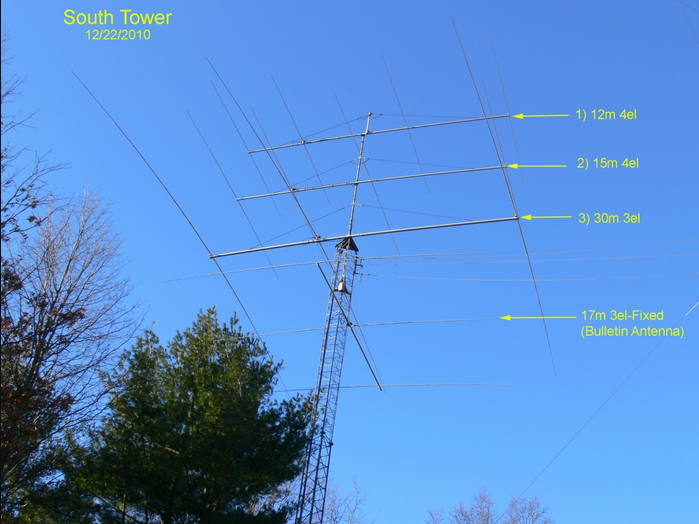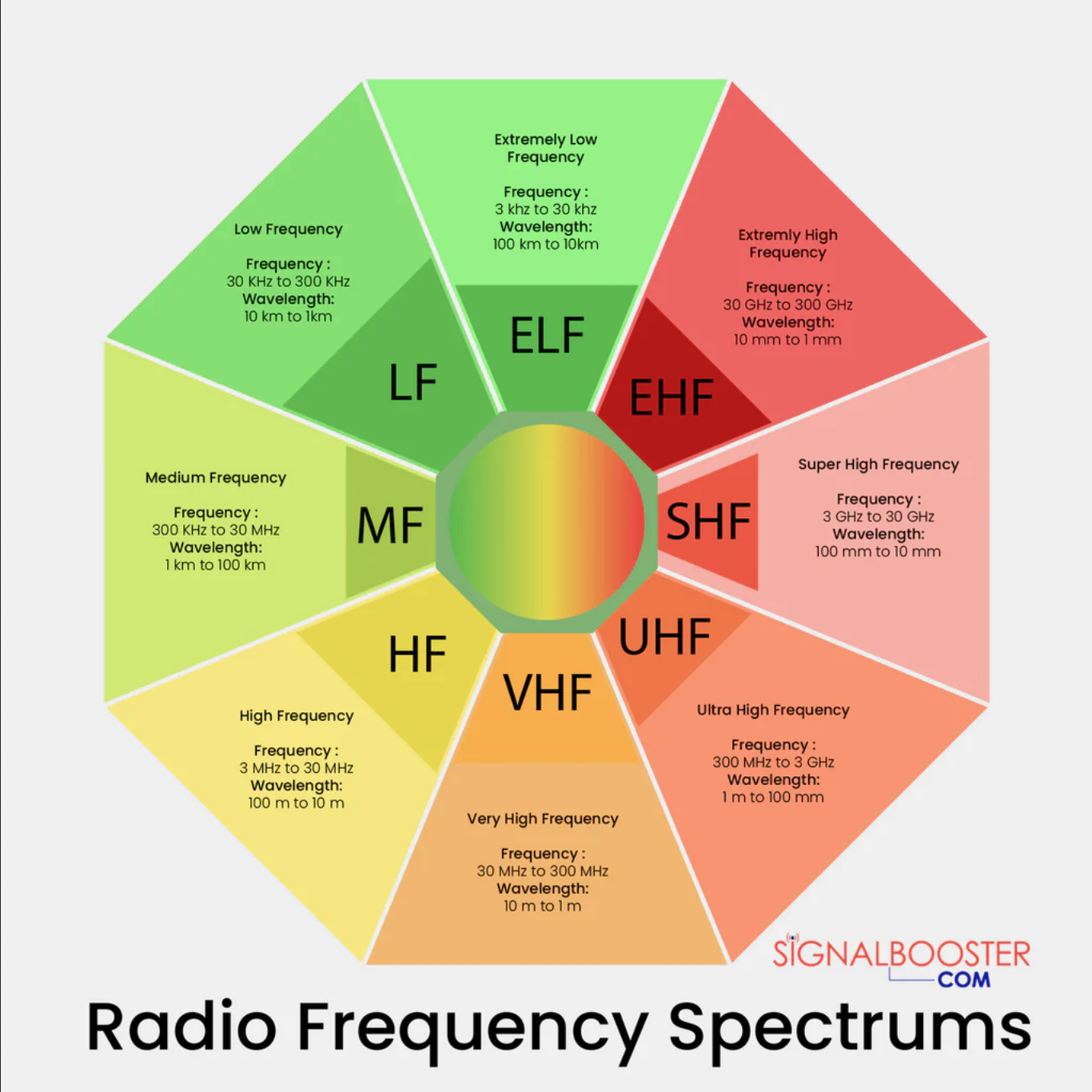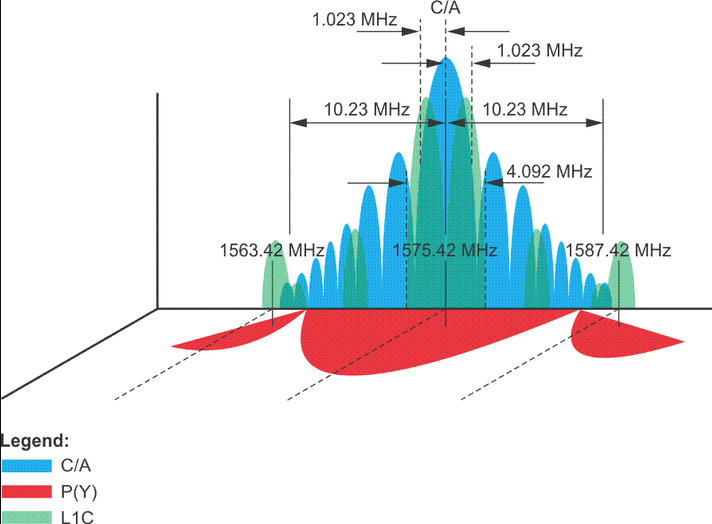SDR The Radio Spectrum & The World Around Us
As a connected society, we’ve all become accustomed to having a smartphone or internet connected device nearby. We understand how it can influence our lifestyle, giving us the means to communicate, receive news, earn a living and use social media. Its our emergency torch, music player, calculator and personal computer all rolled in to one. Apple or Android, we engage less when we lack our ability to reliably communicate. However using these devices takes infrastructure to run, components to be built and chunks of the electromagnetic spectrum to operate.
In this article we’ll be touching on how it is subtly used in our everyday life and whats seen in the world around us when we view parts of the RF spectrum.
But first, its over to the electronic brain for a quick run down on SDR and how it was developed to change the utility of radio.
Input: Explain SDR for the readers, and include a quick run down on its development
Output: SDR stands for Software Defined Radio, which is a term used to describe a radio communications system where components that were traditionally implemented in hardware are now implemented using software.
In a traditional radio system, the components that handle the signal processing and modulation/demodulation functions are implemented using specialized hardware components. With SDR, these functions are implemented using software, which can run on general-purpose computing platforms such as CPUs or FPGAs.
The development of SDR technology can be traced back to the 1970s when researchers began experimenting with digital signal processing (DSP) techniques to implement radio functions. However, it was not until the 1990s that the technology became mature enough for practical use.
The US Department of Defense played a significant role in the development of SDR technology, funding research efforts and sponsoring the creation of open standards for SDR. The first SDR standard, known as Software Communications Architecture (SCA), was developed in the late 1990s by a consortium of companies and government agencies led by the US Department of Defense.
Since then, the technology has been widely adopted in both military and civilian applications, including wireless communication systems, mobile networks, and satellite communication systems. The flexibility and adaptability of SDR make it a promising technology for future communication systems, especially in the context of emerging 5G and IoT applications.
As you can see, SDR was a significant technological shift away from the stand alone transmitters and receivers of old. Those older folk reading may remember a time pre mobile phones where things like Ham and CB radio were the dominant means of communication that had no reliance on the land line telephone network. While CB systems could be reasonably user friendly due to their simplistic design, the ham radios of old were a finicky beast, prone to frequency drifting and requiring High Voltage components like vacuum tubes to obtain acceptable power outputs. Subject to the solar cycle, HF Radio became less important in the era of Fibre Optics, Space Communications and Mobile Telephony but still plays a critical role around the world today, allowing people in remote areas to receive entertainment and news broadcasts or call for emergency assistance in remote areas. Its also seen in some remote parts of Australia, used to provide education and schooling to children in the outback. Whilst a somewhat dated medium today compared to newer technology, its still a vital part of the worldwide communications link at various points and usually one of the first few options turned to when a backup system is needed.
If you haven’t ever been a radio nerd, you might be wondering what exactly the HF in HF radio actually stands for, so we’ll start out explaining there.
HF, standing for High Frequency describes just one section of the electromagnetic spectrum around us and is commonly accepted to the the frequencies at or between 3 and 30 megahertz. Known for its long wavelengths and often referred to as the “shortwave band” due to its use by worldwide broadcasters the HF band has a long and fabled history, with transmitters being put on all types of things, including satellites and spacecraft. One interesting fact about HF radio was its use on the battlefield, being used to transmit the locations of German U Boats during World War Two. Because of this, the British developed a triangulation system to locate and sink these boats. Known as HF/DF or “Huff Duff” this effective triangulation method relied on direction finding theory still relevant today. Time and transmitters may move along but the laws of physics remain unchanged. This law of physics however is one of the very things that works against high frequency radio. By its very nature it needs large antennas, fixed high about the ground for it to work at peak efficiency. Whilst this is easy to achieve commercially (and even an advantage for some communication types) its less practical in things like urban areas where space tends to be at a premium and communications distances when measured point to point are notably shorter. HF antenna at Radio W1AW
HF antenna at Radio W1AW
When we look at the spectrum we can see that its broken up into nice little segments, that are easy to for us to visually process. One thing about the RF spectrum that’s often misunderstood by beginners, is that the higher the frequency the shorter the antenna can be which is where that efficiency within urban and mobile environments starts to come in to play. Frequency Allocations by ITU
Frequency Allocations by ITU
If you reference the included image, you’ll start to see other parts of the spectrum and the frequency range that they co relate to. Processing the entire spectrum whilst interesting (for nerds) is outside the scope of a single article, particularly the one you’re currently reading. So we’ll be looking at upper sections in particular, namely the VHF, and UHF sections. Ranging from around 50mhz from the lower end of VHF and finishing at around 3Ghz for UHF these parts of the spectrum have been incredibly important for human and technological development but have become particularly relevant in the internet age. In the 60s and 70s VHF was critical in providing early television services and reliable communication services between things like emergency services. Even businesses would use VHF networks, with repeater stations regularly seen to provide dispatch services and updates to mobile stations without the requirement of needing to use the land line network.
Ranging from around 50mhz from the lower end of VHF and finishing at around 3Ghz for UHF these parts of the spectrum have been incredibly important for human and technological development but have become particularly relevant in the internet age. In the 60s and 70s VHF was critical in providing early television services and reliable communication services between things like emergency services. Even businesses would use VHF networks, with repeater stations regularly seen to provide dispatch services and updates to mobile stations without the requirement of needing to use the land line network.
However as mobile devices have evolved, the use of the spectrum has shifted and evolved with it. Whilst originally requiring small portions of the spectrum, the need for mobile data bandwidth, video calling and even things like GPS devices has caused these spectrum chunks to become wider and more valuable as a whole.
When we look at this spectrum usage we can see several different and innovative uses. Whilst some parts of the spectrum are small, niche in use and not used by everyday people, things like GPS are extremely common in daily life and take up spectrum that is disproportionate to its social and economic value. Located in the L band part of the spectrum covering roughly 1.164 to 1.610ghz this signal is both weak yet extremely efficient. Traveling at around 20,000km distance before it reaches earth these narrow bandwidth signals assist in navigating everything from Ships, to Planes and Spacecraft and have became a well used part of daily life. You use GPS even if you “don’t” use GPS as without it things like time synchronization would be less available, rendering the internet and other forms of communication less functional or inoperable without the ability to tell and manage time correctly. GPS Signal: Carrier and data
GPS Signal: Carrier and data
Moving up higher in the frequency range we’ll now shift to another important chunk of spectrum. 2.4ghz ISM or the Industrial band as its often also called. Varying in frequency regionally, but generally accepted as being between 2.4 and 2.4835 GHz, this narrow frequency block provides many of the tools we know and use every day. This can include things like
- Wi-Fi Access Points and Routers.
- Cordless Phones and Cameras
3. Bluetooth Devices
4. Game Controllers
5. Wireless Keyboards / Mouse
6. RF based Security Cameras
Being a heavily used band with a small range of frequencies to work with, interference issues can be common, particularly in larger more built up areas and subsequently some types of equipment will automatically take the most optimal approach in regards to frequency management. Bluetooth for instance, uses a frequency hopping spread spectrum approach to modulation. This enables multiple devices to use the same section of bandwidth enabling said devices to be successfully used with little to no interference. This makes Bluetooth extremely useful, with modulation types that reflect the use of this utility, meaning music transfer, HID (Human Interface Devices) for IT and file transfers all have their own specific protocol.
SDR provides the technological utility to be able to bring these devices together in a format that’s usable and affordable to the masses. Given anything that communicates within that frequency nature must contain either a receiver, a transmitter or both, we can soon see that the technology benefit that these devices add to the world around us.
If you’d like to experiment with SDR but aren’t quite sure where to start, then we’ve included some information you may find helpful. Available in USB dongles, just like Wi Fi and Bluetooth cards, SDR is able to be run on the typical laptop cheaply and easily due to the proliferation of RTL-SDR dongles and freeware programs. While some better engineered SDR devices can be expensive, we’ve included some Amazon affiliate links that will point you to a cheap, affordable SDR that you can use to look at the electronic environment around you and begin your experimental / educational journey in to the radio frequency spectrum. They can even be used to start your journey in to open source intelligence, being used to track aircraft and feed the data to a flight tracker like Flightradar24 or Flight Aware. You can find the links below
RTL-SDR With Antenna
RTL-SDR Dongle Only
RTL-SDR Nano
In Part 2 of this article, we’ll show you how to use one of these dongles to detect these aviation transmissions, and even include a tutorial to listen to communications from space and detect other transmitters in your local environment. You’ll also learn how these devices can be placed and accessed remotely, creating a remote receiving station that can be accessed over the internet.
Powered by a raspberry pi or other single board computer, you can also feed this data to WebSDR so others can access it remotely. If you’d like to set this up you can purchase a suitable raspberry pi board via the links below.
Rpi Version 4
Rpi Zero
If you’d like to experiment with SDR but lack the time, space or finances to conduct your own experiments, you can use the WebSDR website in your browser right now with no outlay. Check it out here at websdr.org



































































